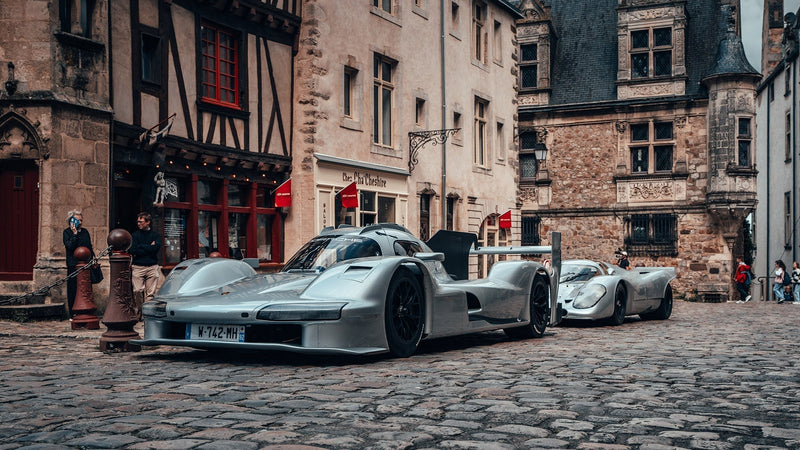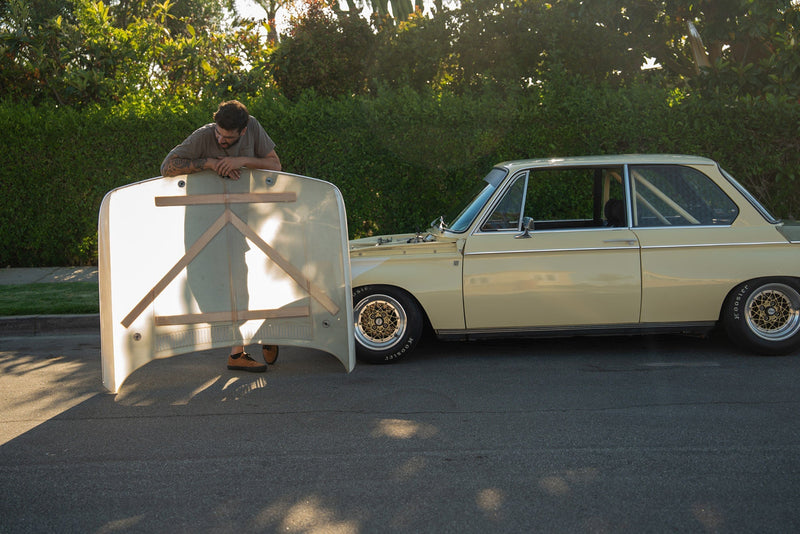I’m always interested in what's going on in people’s minds when they think about “car culture.” In between all the possible definitions there is always a new way to express our interests, wants, and opinions on the machines humans have made: some only see them in practical or impractical terms, others see them as a business, some a way of socialize, and unfortunately sometimes as a way or instrument to pump their egos.
We can also enjoy the pure speed and wonder at how we’ve developed our technological advances over time, while others want to be hands-on and design them; deciding the lines and curves, drawing and finding their emotions through the language of the automobile. Can all of this be be considered car culture? Or is it too broad to matter? At one point or another since the first thing on wheels with a motor came into existence, our relationship with cars and other people through started to form this interesting web of mechanical and aesthetic abilities, social lives built around cars, our careers, our experiences and memories made possible by vehicles that were a part of it, and of course the desire to construct things that celebrate them (like Petrolicious). And there’s another (among many): painting what we love! Car culture is too broad to be defined in my opinion, but Oxford says of it all; “Car culture: a society or way of life characterized by excessive use of or reliance on motor vehicles.” I guess this will have to do.



But when you talk about car culture it's not only about the cars of course, it's also about the interactions that happen when we transform those materials and tools and give them a cultural value and meaning and present them to the rest of the world through new forms and mediums like photography, writing, and other arts. it’s also how we reinterpret and give artistic and social values to the objects we rely on, and that's why it is so important to point out the people that bring their passion for cars out in artistic form. In that, I want to explore the life of the artist Alexandros Faccini, a supreme fan the automobile who is also a restaurateur. I met with him and to hear how he is using his painting talent to showcase and share his passion in Bogotá Colombia.
Alexandros or Alex as friends call him, is a man of deep artistic aptitude born here in Bogotá and raised in a family with dual interests in polo and cars, and he developed a desire and the skills to sculpt, draw, play music, and of course, paint cars.



I went to visit him in his apartment and workshop in Bogotá recently, and it was a nice evening spent chatting and drinking some great coffee (you need to visit Colombia to taste the best coffee in the world). We had an interesting talk about cars, art, and his life experiences in his own version of “car culture.”
Alvaro Pinzon: How does all this interest in cars begin for you, and how does the art follow in that story?
Alexandros Faccini: Since I was a child, I had wondered how mechanical things worked, mostly transportation-based: cars, bikes, trains, etc., so all my toys were broken after five minutes , but later in life that led me to become curious about restoring cars and I even opened my own restoration workshop. On the other side, the artistic stuff started at the same age of my toy destroying, as I was in school sculpting and carving my teachers’ faces in chalk and drawing horses and cars in charcoal.


…
Later on after school, Alex took an interest in motorcycle ownership but riding with friends on Harleys wasn’t enough, so he started to work on his own restoration shop, and in between work on the bikes, he would draw designs and then paint the helmets of his friends. Then adding two more wheels to the mix, he started to work on restoring vintage Mercedes-Benzes in the 1990s.


…
AP: How did you start working on Mercedes?
AF: My passion for cars, and especially Mercedes-Benz, led me to becoming the founder of the Mercedes-Benz Club in Colombia, and in the late ‘90s I was invited to a world congress of all the Benz clubs from around the world in Germany!
AP: That’s pretty cool that they took an interest in their fans’ interest in them—what was that like?
AF: It was a memorable experience arriving at the MB headquarters for sure. I was pleased and honored to enter into some of their private workshops, ranging from their secrets archives, through the racing car workshops, and of course the vintage restoration areas. I had a once in a lifetime opportunity! And when I talked to their mechanics they were impressed with what we were doing too; I brought some printed photos of my own workshop and I think they were impressed by the quality of the cars in Colombia: I think they never even imagined that it was happening in our country.
I then went to the museum on a Monday, which if you know Germany, is a day when many such things are closed, but I was lucky to have access from my visit, and that was wonderful because I had the opportunity to get too close to some of the rarest and most revered historic cars than any other person who visited the museum before!
I even had the opportunity to have a little tweed from the upholstery workshop, similar to the stuff they used in the 300SLR; that was wonderful!




AP: Incredible. Do you still have that?
AF: Yes, let me find it! It brings me good memories.


AP: Do you have anything documenting your own work on the cars?
AF: Of course! Here are some photos of a car that I restored; I did work as a restaurateur for nearly 10 years in the ‘90s, but in that time having a restoration workshop was a dream of mine, but wasn’t the best business given the difficult times of that era in the country, and due to different situations we went bankrupt and sadly I had to close the workshop.
Those were hard times, but thankfully the day after I closed the shop I started to take my painting seriously and it helped me a lot. It’s my passion and it’s connected to my other passion that is cars and horses. On one level my horse paintings are exhibited in a nice gallery in West Palm Beach, and on the other, my paintings started to gain recognition between local art exhibitions and some important friends and collectors who requested me to paint their beloved cars, so by now this is all I do for a living!




AP: Can you tell me how you started with the idea of making paintings of cars and horses on acrylic sheets?
AF: Well as I stated before, I was doing it for a long time prior to it being my career, and I also was doing bronze statues of horses and cars in the past; I loved how tridimensional objects and plasticity materials let you explore the forms in a way that traditional materials can’t, so I was disappointed with the traditional canvas paper paintings I was doing at that time. With that medium I feel you can't have the depth of forms that you have in a 3D object, so I started experimenting with different materials and found the acrylic sheets and found that they worked well what with their transparency and their thickness to create a deep of field that paper doesn’t allow. Plus it also gives a shining finish to the work; that characteristic plays well with ambient lights.
AP: Can you walk me through the process of creating one of these? How is that started?
AF: Well all of this is in my mind before anything else, but sometimes I start with photographs as a reference for the actual layouts. The entire process is by hand and it becomes difficult sometimes because to create the depth of field between one character and the car for example: you have to first plan your composition, respecting which objects will go where when it’s all done. Using a sheet of acrylic, to paint the people in the foreground I start with the base paint and move to the finer details later on, but when it comes to the objects on the other side of the sheet, I have to paint the objects as mirrored of course, and the entire process here is inverse: not only the perspective of the image but also I have to start painting the finer details first to finally apply the base paint, so when you get to look at the acrylic on the front side it is all cohesive.

…
Meanwhile, we went to his painting workshop with Alex showing me his place covered all over with scale-model cars kits he’s built. Another interest is his work doing dioramas as commissioned work. All around us were painting materials, pencils, paintings, etc. Exactly as you’d expect an artist’s space to look like.












…
AP: I also saw you were a part of the 2016 Goodwood Revival; how was that experience? And what's the next one you want to do with your art?
AF: Well that was an amazing experience of course! I went alone with over 15 paintings. People loved it and the allure of the status quo when you see all the revival themes, even in the clothes of the people, those incredible cars racing to their limits, and the vintage airplanes makes for an excellent place to find inspiration for my paintings, so I am very motivated to plan more themed work of painted cars and also to return to the Revival.
AP: Thanks Alex for letting us get a glimpse into your life and experiences in your own personal car culture. I had a great time talking with you.
AF: This is your house, always welcome. I love what you guys are doing and hope we meet at the next Revival!























































